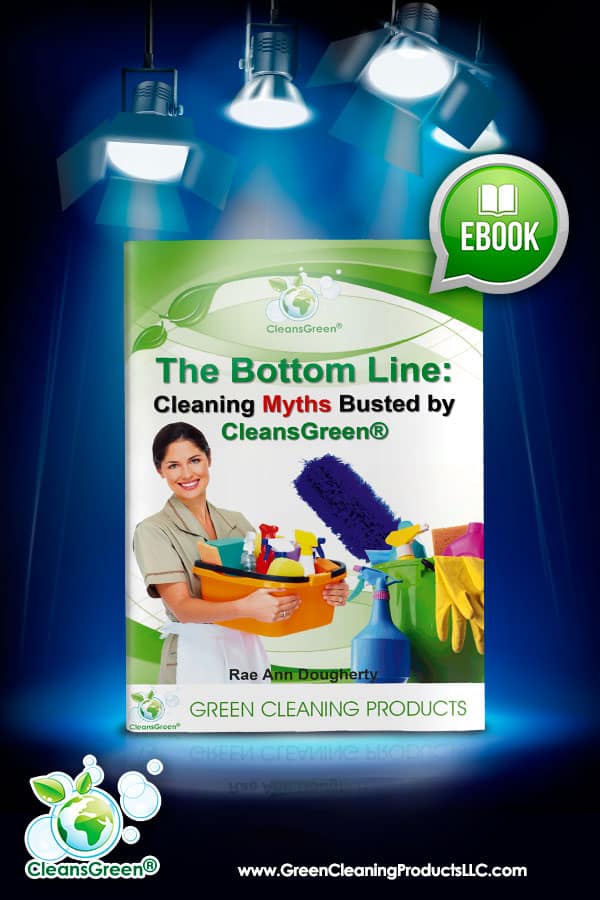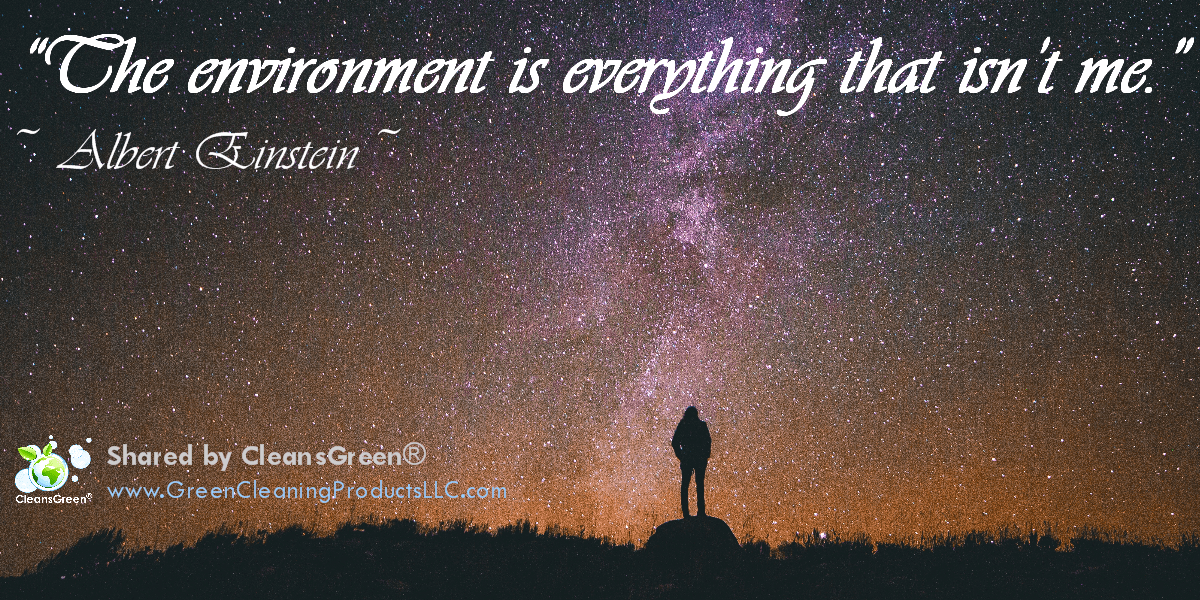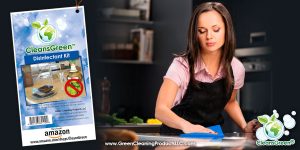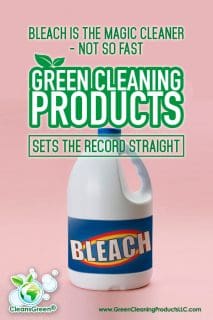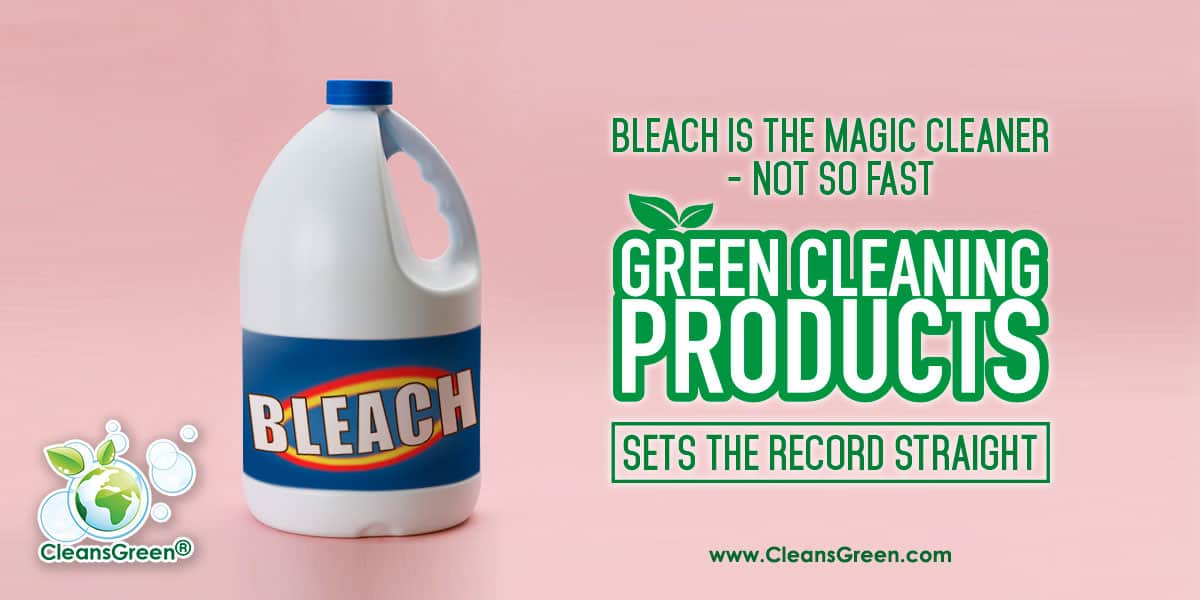
Green cleaning products. We all find the value of them, even if we do not personally purchase them. Amongst what we know we “should do” are mistaken cleaning tips, a.k.a., cleaning myths. In fact if you do follow the myths they may actually slow down your cleaning routine. Certainly a counter-productive tactic!
One goal of selecting green cleaning products is to protect our environment. As Albert Einstein stated, “The environment is anything that isn’t me.” In protecting our environment (and budget), we often leverage common, inexpensive household things as much as possible. For instance, bleach.
 A common misbelief is that “Bleach is potent and is the magic cleaner”.
A common misbelief is that “Bleach is potent and is the magic cleaner”.
NOT SO FAST – Bleach actually does not clean anything.
Although it can remove or at least lighten and brighten tough stains, thus making things look cleaner; it does not remove soil, nor clean dirt or residue from surfaces, i.e., the definition of “clean.”
The thought is that a heavy bleach scent in the air implies that something is really clean. Unfortunately that is not true. The heavy fumes of bleach can make you sick. Additionally contact with bleach on skin is irritating and can be very harmful. Furthermore, mixing bleach with many other cleaners, such as acidic products, especially anything that contains ANY quantity of ammonia, can create toxic results. This may have deadly consequences!
Bleach is poisonous. Thus it may kill some bacteria, but not all. This leads many to consider bleach as THE disinfectant. Without first removing the dirt and food source for germs, however, bacteria and viruses can linger even with a bleach application.
While many will interchange the concepts of ‘cleaning’ and ‘disinfecting’, as explained in “Cleaning and Disinfecting are NOT the Same”.
If disinfecting is your objective, then a multi-step process of cleaning, applying bleach, and rinsing is required. Due to its shelf life, however, the effectiveness of this time consuming and labor intensive process is unpredictable.
Even worse, bleach is not classified by the US EPA as a disinfectant.
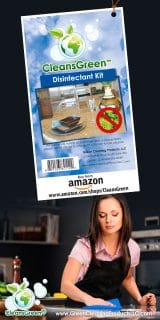 The CleansGreen® Disinfectant Kit is unique. While it is an EPA registered disinfectant, it also it contains non-toxic, non-corrosive, and safe disinfectant concentrate along with a sky blue color matched plush terry type microfiber cloth.
The CleansGreen® Disinfectant Kit is unique. While it is an EPA registered disinfectant, it also it contains non-toxic, non-corrosive, and safe disinfectant concentrate along with a sky blue color matched plush terry type microfiber cloth.
EnviroCare Neutral Disinfectant is a unique product. While it is hospital grade, it is also pH neutral. The greatest benefit of this pH neutral disinfectant is that it can air dry after application. No rinsing is required after the dwell time, thus reducing a steps in the time consuming process.
Shelf Life of Bleach is Short
You did not know that bleach had a shelf life? It does. Bleach is one of those household chemicals that loses its efficacy over time. It does not matter whether the bleach container has been opened or not.
The active ingredient in bleach, sodium hypochlorite, naturally breaks down into salt and water and over time will not function much as bleach anymore. The rate of breakdown increases rapidly when bleach is stored in extreme hot (like 90°F) or freezing temperatures, or when a bottle is more than one year old. Generally, bleach stored at room temperature (about 70°F) has a shelf life of less than a year.
It takes about 4-8 weeks from the time chlorine bleach is made to when it gets to a store where it can be bought. This leaves only 3 to 5 months where the bleach is at the effectiveness level that stated on its label. Afterwards the effectiveness continues to decline to the point of worthlessness.
Do not rely on bleach to be the ultimate disinfectant. In this case, buy only what is needed since a bottle of bleach has a shelf life.
The Bottom Line from Green Cleaning Products
Seeking more information about common myths, sign up for the eBook by Green Cleaning Products LLC, “The Bottom Line: Cleaning Myths Busted by CleansGreen®” to learn more about others.
